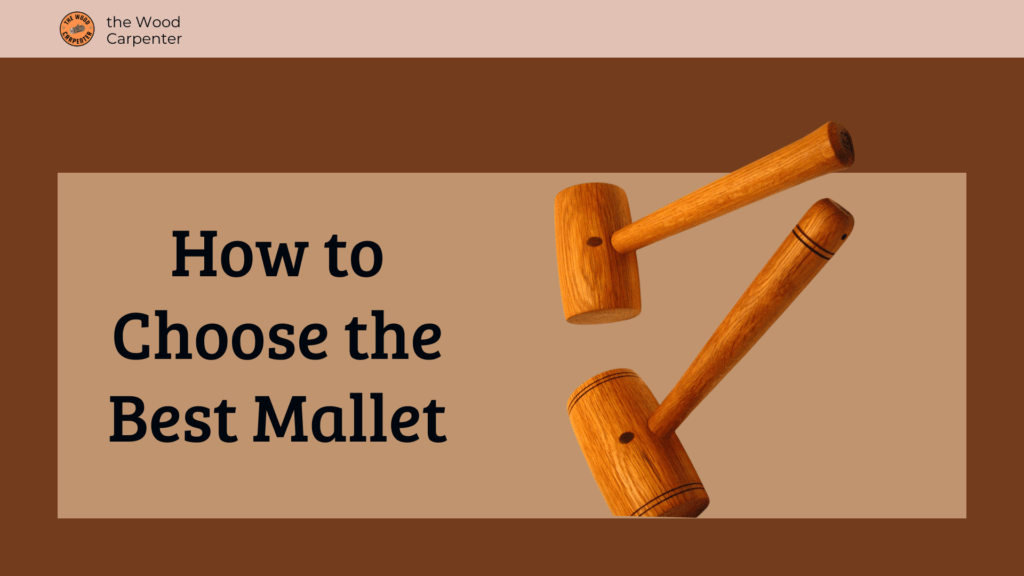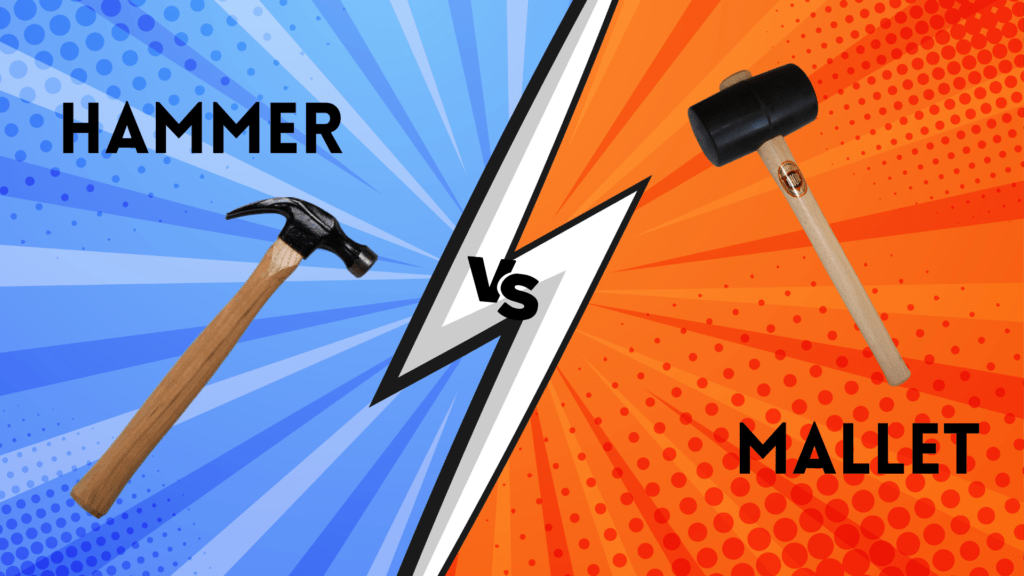
Choosing the right mallet is important if you work with wood, metal, leather, or in construction. Mallets are also used in sports like polo and in music. With so many types and materials available, finding the best one can feel confusing.
This easy-to-follow guide will help you understand what to look for so you can pick the mallet that fits your job and helps you do your best work.
What Is a Mallet?
A mallet is a type of tool used to hit things without causing damage. Unlike regular hammers, mallets have a softer head—usually made of wood, rubber, or plastic.
They give you better control when tapping or hitting, and they’re useful in many areas like woodworking, metalworking, building, leather crafting, cooking, and even playing some musical instruments.
Key Factors to Consider When Choosing a Mallet
1. Identify Your Purpose
Woodworking: Opt for wooden or carver’s mallets for chiseling and joinery.
Metalworking: Choose dead blow, brass, or rawhide mallets to avoid marring metal.
Construction: Rubber or plastic mallets are ideal for non-marring strikes.
Sports: Polo and croquet mallets are specialized for balance and swing.
Music: Select mallets based on instrument sensitivity and desired tone.
2. Material of the Head
Wood: Best for woodworking, gentle on wood surfaces.
Rubber/Plastic: Non-marring, suitable for assembly and delicate surfaces.
Rawhide: Shock-absorbing, perfect for jewelry and leatherwork.
Brass/Copper: Non-sparking, ideal for sensitive environments.
3. Weight and Balance
Lighter Mallets: Suitable for delicate or repetitive tasks.
Heavier Mallets: Provide more striking force for tough materials.
Balance: A well-balanced mallet reduces fatigue and increases accuracy. Test different weights and balances to find what feels natural in your hand.
4. Handle Design and Length
Short Handles: Offer better control, ideal for detailed work.
Long Handles: Provide more leverage and power, suitable for construction or sports.
Grip: Look for ergonomic, non-slip grips. Replace worn grips regularly for safety and performance.
5. Head Size and Shape
Large Heads: Offer a bigger striking surface, reducing mis-hits—great for beginners.
Small Heads: Provide more control and precision for advanced users.
6. Rebound Control
Dead Blow Mallets: Minimize rebound, allowing for precise, controlled strikes—especially important in metalworking and automotive repair.
7. Application Specificity
Choose a mallet designed for your specific trade. For example, rawhide mallets for jewelry, dead blow for auto repair, or specialized sports mallets for polo or croquet.
8. Brand Reputation and Quality
Opt for reputable brands known for durability and performance. Read reviews and seek recommendations from professionals in your field.
9. Budget
Mallets are available at various price points. Invest according to your usage frequency and required quality. Quality mallets often last longer and perform better.
10. Try Before You Buy
Whenever possible, test the mallet for comfort, grip, and balance. Many specialty stores and clubs allow you to try different options before purchasing.
Also read:
5 Best Wood’s for Knife Handles
Types of Mallets and Their Applications
Understanding the different mallet types is the foundation for making the right choice:
| Mallet Type | Head Material | Common Uses |
| Wooden Mallet | Hardwood (beech, oak) | Woodworking, chiseling, joinery, bat preparation |
| Rubber Mallet | Soft rubber | Furniture assembly, tile setting, machinery adjustment |
| Plastic Mallet | Nylon, polyurethane | Automotive, metalwork, leatherwork |
| Dead Blow Mallet | Rubber/plastic + shot | Metalwork, automotive, precise, non-rebound strikes |
| Rawhide Mallet | Rawhide leather | Jewelry, leatherwork, delicate metal forming |
| Brass/Copper Mallet | Brass, copper | Metalwork, machinery, spark-free environments |
| Carver’s Mallet | Hardwood | Wood carving, fine detail work |
| Sports Mallet | Wood, composite | Polo, croquet |
| Meat Mallet | Metal, wood | Tenderizing meat |
Each type is engineered for specific tasks, so always match the mallet to your intended application.
Final Words:
Choosing the best mallet boils down to understanding your task, selecting the right material, and ensuring ergonomic comfort. Whether you’re crafting fine jewelry, assembling furniture, or pounding tent stakes, there’s a perfect mallet for your needs.
Don’t overlook the importance of this simple tool—when chosen correctly, a mallet can drastically improve your workflow, precision, and project outcome.
FAQs
Q1. What is the difference between a hammer and a mallet?

A hammer typically has a metal head and is used for driving nails or breaking things. A mallet has a softer head and is used where you don’t want to damage the workpiece.
Q2. Can I use a rubber mallet for woodworking?
Yes, but a wooden mallet is generally better for chiseling and traditional woodworking because it provides more control and is designed to work with wood tools.
Q3. Is a dead blow hammer the same as a mallet?
A dead blow hammer is a type of mallet filled with metal shot to minimize rebound and deliver a more forceful strike. It’s used for precision and control in automotive and industrial tasks.
Q4. What weight mallet should I choose?
It depends on the task:
- For fine woodworking, choose 12–16 oz.
- For metal or auto work, consider 1–3 lbs.
- Heavier mallets provide more force but can be tiring for repetitive use.
Q5. Are mallet heads replaceable?
Some mallets, especially plastic or dead blow types, have replaceable heads, which is convenient and cost-saving over time.

